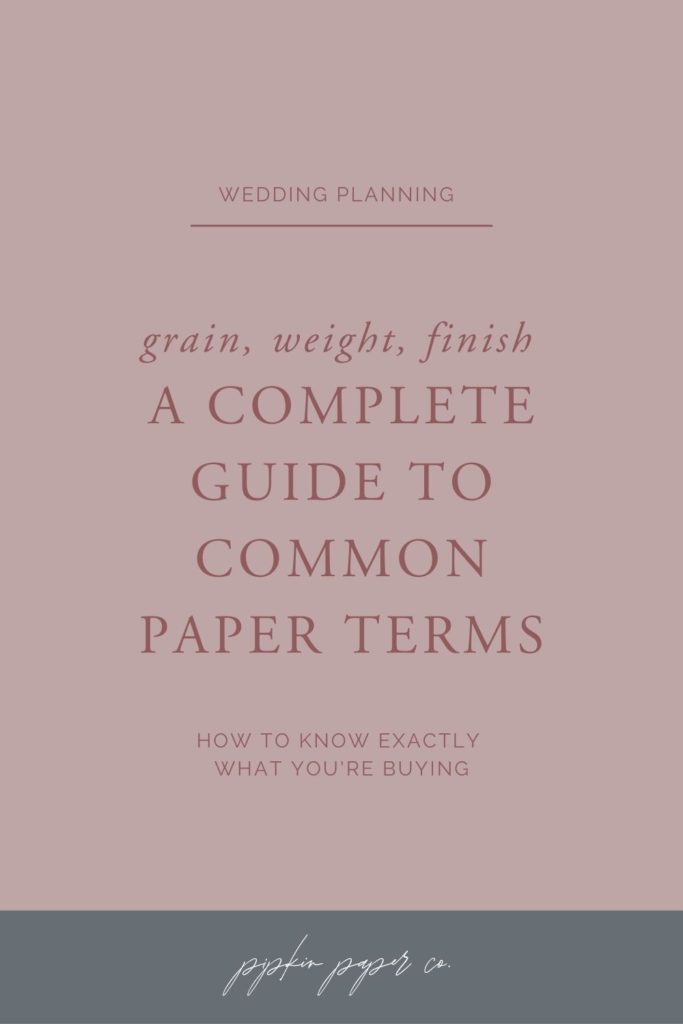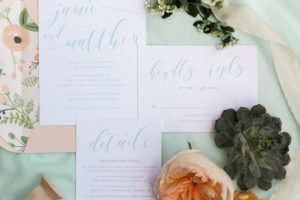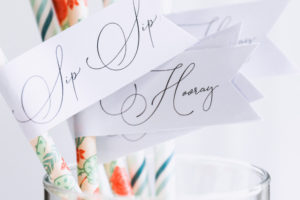Grain, Weight, Finish… A Guide to Common Paper Terms
What’s in a name? Well, if you’ve ever shopped for paper, quite a bit of confusion and ambiguity.
Okay, that made me chuckle. But really, paper terms are confusing, right?
We’re taught from a young age that paper is paper. But when it comes to actually buying paper, you’ll hear words you never knew existed, like grain, finish, mill, and weight. It’s no wonder my clients and customers have a hard time choosing the right paper for their needs. There’s a million different options and a million different terms to describe each one.
That’s why I put together this comprehensive list of common paper terms to help you wade through the jargon and choose the right paper for your project.

A Guide to Common Paper Terms
If you’re wondering where to buy, I buy most of mine from Cards and Pockets. Not sponsored – they’re just the best and I highly recommend them.
Mill
A mill is the brand or company that makes the paper. There are several big paper mills you hear of a lot, with each one specializing in different colors, textures, and materials. In the fine stationery department, my favorite mills are Reich, Neenah, and Mohawk.
While you usually can’t buy paper directly from mills, you can buy it through resellers, like Cards and Pockets.
Line or Collection
Each mill creates lines or collections with their own finishes, weights and colors. They’re usually grouped into similar finishes, like metallic shimmer, colorful matte solids, or luxe cottons. Like a clothing brand, a mill might release new lines occasionally to keep up with changing trends or to corner new markets.
Finish
The word finish refers to the paper’s texture.
Terms like cotton, linen, felt, or canvas denote the finish and typically describe either the material or the pattern. For instance, cotton paper is made from cotton as opposed to wood pulp. Linen paper has a texture very similar to that of linen fabric. And canvas paper looks an awful lot like an artist’s canvas.
You’ll also see terms like matte or glossy, coated or uncoated, recycled or embossed. It’s all too much to dive into here. So, in order to get a true feeling for a paper’s finish, it’s best to order a sample and take it for a spin. Only then will you know how the paper performs in the real world.
Want to know more? I talk about all the different finishes in this post.
Printability
A paper’s finish determines how well it absorbs ink and, therefore, the printing methods that can be used (aka it’s “printability”).
Glossy cardstock isn’t always suitable for wet ink printing methods, such as inkjet or digital printers. Meanwhile, laser toner can sometimes look flaky on vellum or parchment.
In order to determine a paper’s printability, you’ll need to take into account how slick the surface is and what kind of ink your printer uses. Rather than guess, I recommend purchasing some paper samples and doing a test print. The results might surprise you!
And if you’re mixing paper types in a project, you’ll probably need to mix printing methods to ensure a flawless print.
Grain
Paper is made up of thousands of tiny wood pulp fibers pressed together. During the paper making process, these fibers align so that they’re mostly facing the same direction.
This direction is what we mean by “grain”.
Knowing about grain is especially important when you’re folding or cutting cardstock, because working in the same direction as the grain can help keep cracking and fraying to a minimum.
Otherwise, grain isn’t really that important. But it is a term you might run across when paper shopping.
Weight
This refers to how thick the paper is. In the U.S., we talk about paper weight in terms of pounds (# or lb) because we like to complicate things. But you may see GSM or Points when working with European paper companies. When it comes to weight, just note that the higher the number, the heavier the paper (usually).
Still confused? I talk about paper weight extensively at the bottom of this post.
Text/Cover
Another way to talk about paper weight, text and cover refer to the class of paper. Text weight paper is thin and flexible and often used for things like flyers, book pages, and traditional printer paper. Cover weight paper is more like poster board and is used for invitations, book covers or artwork.
Not to confuse you too much, but in the U.S. pound system, 100# text weight paper will always be thinner than 100# cover weight paper.
Color
Whew! An easy one! Color refers to the hue of the paper.
Each mill has its own colors, so “white” from one mill may look completely different than “white” from another mill. But usually the colors at a particular mill are uniform across different finishes, weights and materials. That way you can mix and match textures while keeping the color the same.
I recommend always ordering a sample to make sure the color is what you had in mind. Or ordering a swatch book to get a feel for every color a supplier offers.
Size
Papers come in several standard sizes, which are determined by the mill.
Common sizes include:
• US Letter – 8 ½” x 11”
• Legal – 8 ½” x 14”
• A7 – 5″ x 7”
• Scrapbook – 12″ x 12”
• Tabloid – 11″ x 17”
…to name a few
Not all papers come in every size. If the size you need isn’t available, a lot of places offer custom cutting services for a small fee.
Are there any common paper terms I didn’t cover?
Just drop ’em in the comments and I’ll help you out.
The information contained on this Website and the resources available for download through this website are for educational and informational purposes only. I am only sharing what worked for me, and as such, I cannot guarantee that any products or processes will give you the same results.





Leave a Reply
We don't like getting spam either. Your email is safe with us.